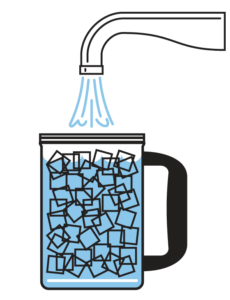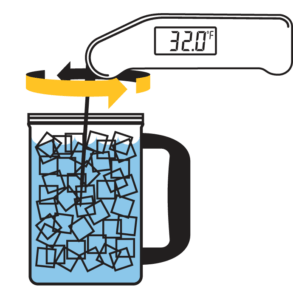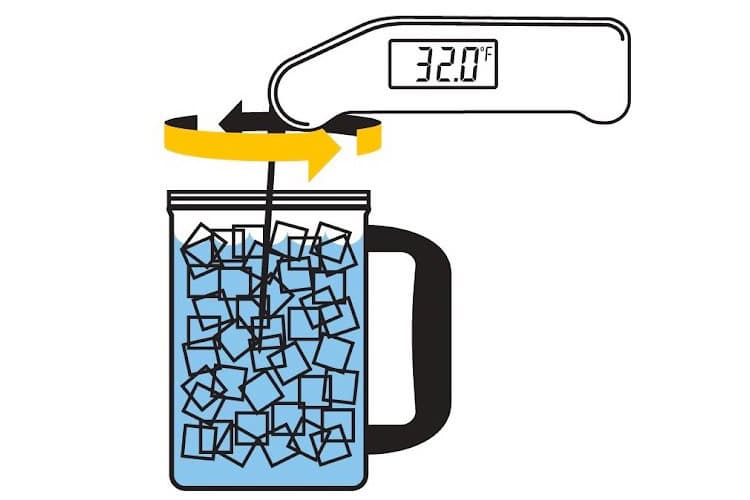How to Create a Properly Made Ice Bath—Thermal Secrets for Calibration
The easiest way to test the accuracy of any thermometer is in a properly made ice bath. If you do this carefully, your ice bath will be 32.0°F within ±0.1°F. If you are not careful, the ice bath can be off by several whole degrees. (Just a cup with ice water in it can be 12 or more degrees too high.)

Fill with ice
Making a proper ice bath is all about keeping a proper ice-to-water ratio. Fill a vessel (such as our Ice Bath Mug) all the way to the top with ice. Crushed ice is preferred because there are fewer gaps between the ice, however cubed ice will also work fine.

Add Water
Slowly add water to fill the spaces between the ice. Fill about 1/2″ below the top of the ice. Let the mixture sit for a minute or two to allow the temperature of the water to settle. If you see the ice starting to float off the bottom of the vessel, pour off some water and add more ice. Water below the ice will not be at 32°F.

Insert the Probe
Once the mixture has rested for a minute or two, insert your probe (or thermometer stem) into the mixture and stir in the vertical center of the ice slurry. Stirring the probe keeps the sensor from resting against an ice cube, which will affect your reading. Keep the probe tip away from the side walls and don’t allow it to rest against the bottom of the vessel. Doing so will give you inaccurate temperature readings. If the thermometer has an extremely fast and sensitive needle tip, like Thermapen® has, you MUST gently stir the probe or you will find colder and warmer spots in the ice bath. Stirring equilibrates the temperature throughout the vessel.
Confirm Calibration
Your thermometer should read 32°F (0°C) in the ice bath. Adjust your dial thermometer as directed by the manufacturer; however, before you attempt to adjust a digital, instant-read thermometer, check that the readings are within the manufacturers’ accuracy specifications. (Look for a ±°F on the documentation included with the instrument.) If it’s within the specified tolerance, don’t adjust.
As a rule of thumb, it’s always a good idea to keep track of your calibrations to monitor the performance of the thermometer over a period of time. Misuse can cause the instrument to fall out of spec more often, and a record of temperatures may help you take corrective actions to preserve the useful life of the thermometer. Keep track of your calibrations with the ThermoWorks Temperature Logbook.







So cool.ty🩷
Reliable and accurate information as always….
Would distilled water ice and distilled water fluid yield more accuracy?
No, it won’t. Tap water and tap-water ice is fine. it is possible that in the thousandths-to-hundredths of degrees range, this could make a difference, but not in the whole or probably even tenths range of Thermapen ONE.